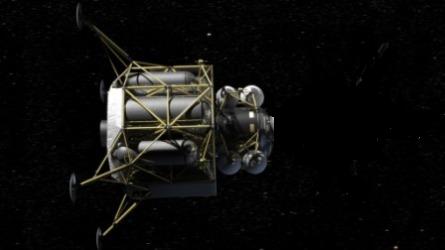NASA's Altair Lunar Lander could have its first test flight with in-orbit propulsion firings in June 2018 after being launched by the US space agency's Ares V cargo launch vehicle.
The Altair's launch would be on the Ares V's test flight, Ares V-Y, already targeted for June 2018. Once Altair is in its 242km (150 miles) low Earth orbit, to which the Ares V's Earth departure stage (EDS) is designed to push the lander, it would separate from the EDS.
|
|---|
Above: NASA's Altair Lunar Lander concept floats in space |
Revealed in the NASA Ares project office's Ares V's pre-phase study, its report says: "Further study will be conducted to determine the feasibility of including a production Altair as a flight-test article and adding test objectives [of separation and propulsion]."
However, the assumption of NASA's Ares V mission concept review is that the Ares V-Y payload will be "a structural analogue" of Altair. NASA's schedule has the first operational Altair lunar mission in December 2019.
CORRECTION: The last time NASA conducted an unmanned LEO lunar lander test flight was Apollo 5 in January 1968. The first and last manned LEO lander test flight was Apollo 9. Launched from Kennedy Space Center's pad 39A on a Saturn V on 3 March 1969 at 11:00 local time into a 190km orbit, the 10-day mission saw its crew of three dock the command module to the lunar module, which was still attached to the Saturn V's S-IVB third stage.
Source: Flight International























